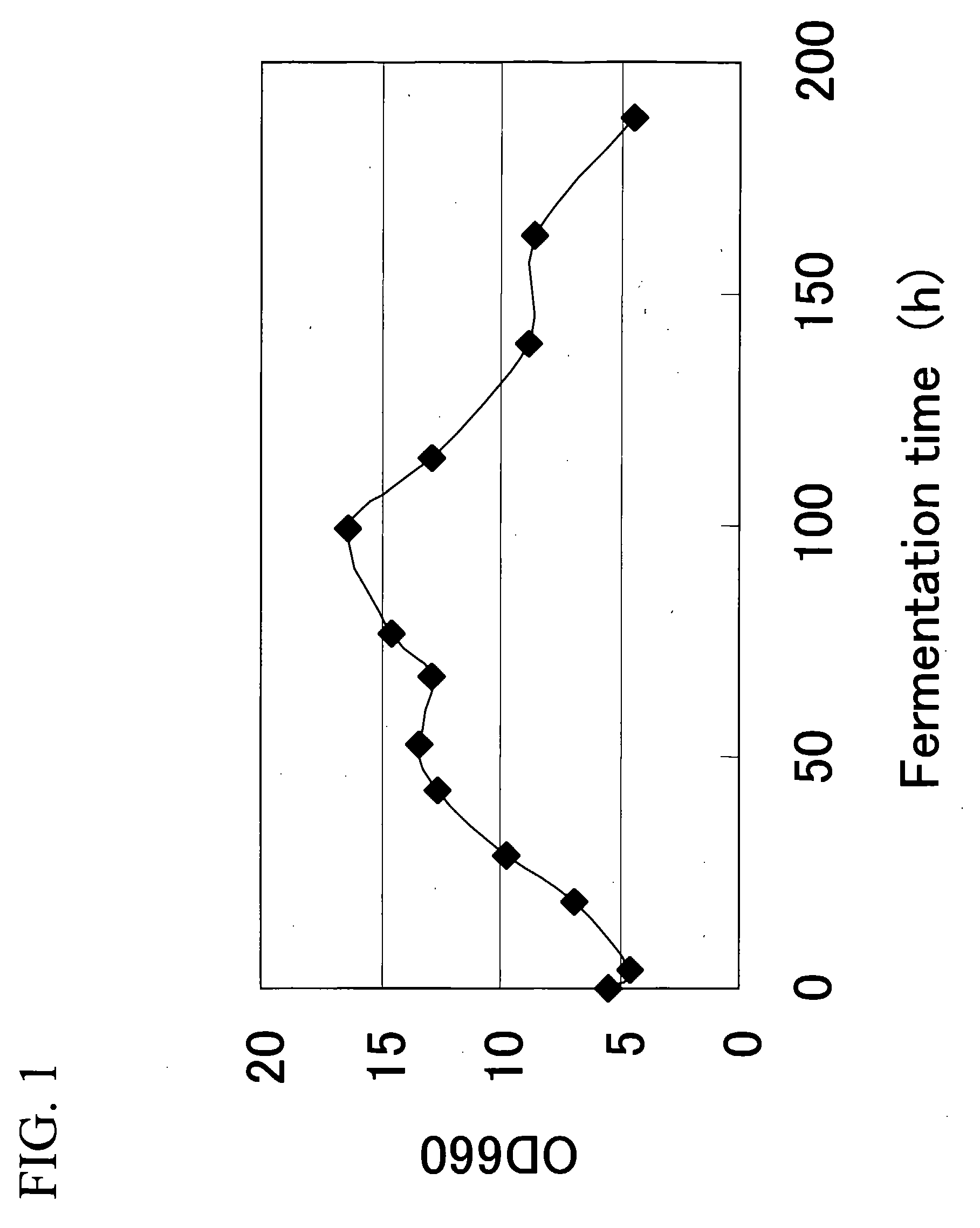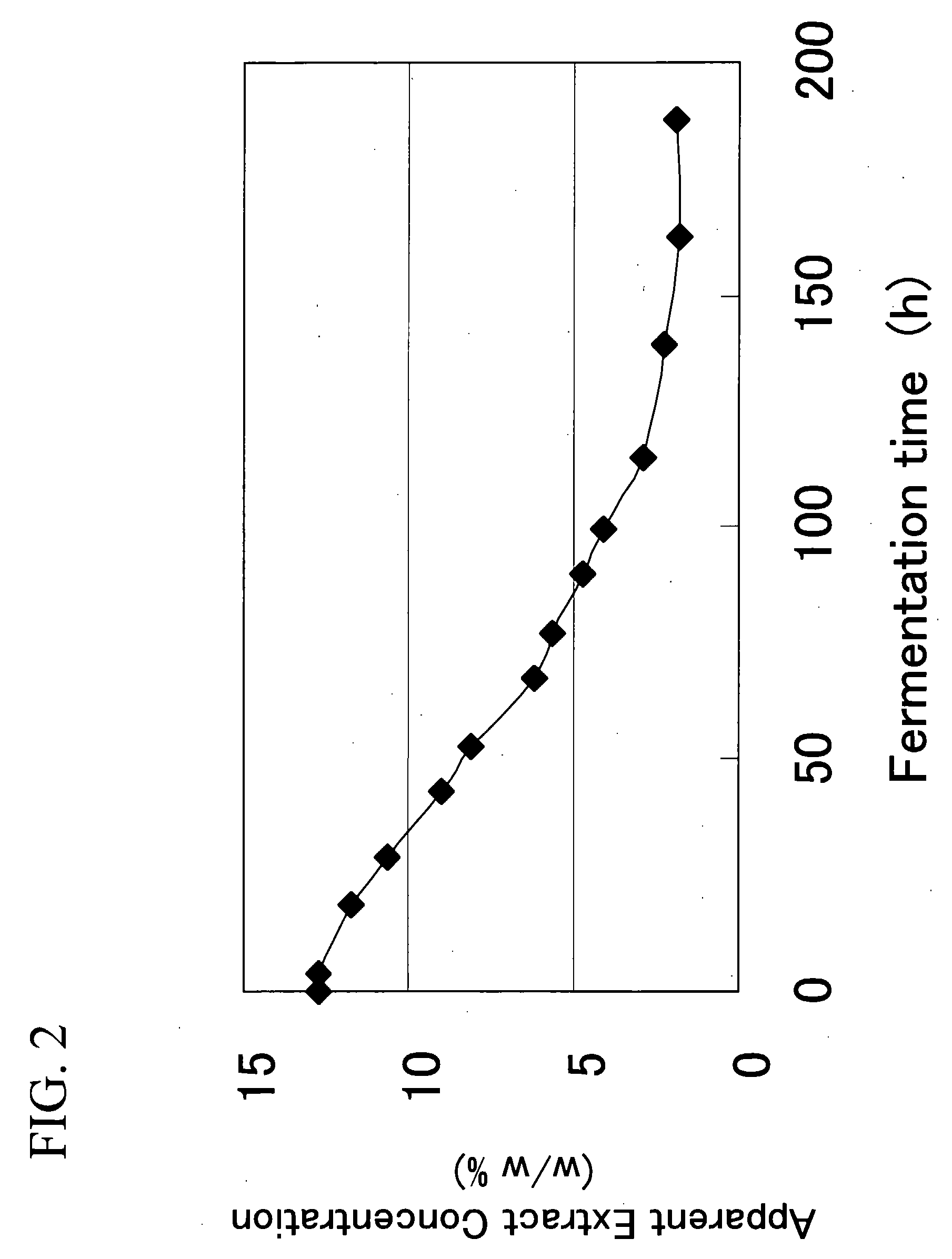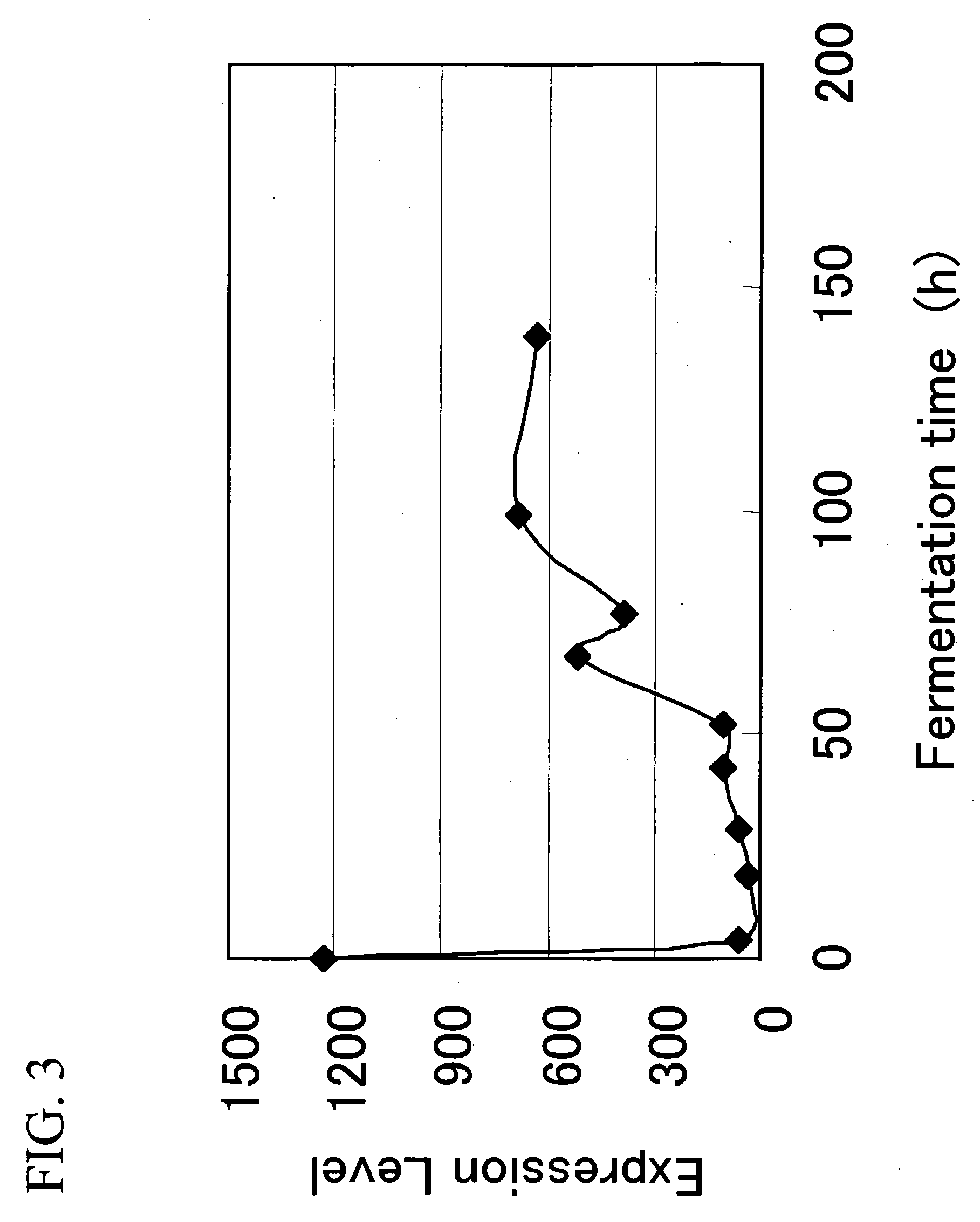Catalase gene and use thereof
a catalase and gene technology, applied in the field of gene encoding catalase, can solve the problems of delay in fermentation, delay in fermentation, delay in fermentation, etc., and achieve the effect of superior flavor stability and longer shelf li
- Summary
- Abstract
- Description
- Claims
- Application Information
AI Technical Summary
Benefits of technology
Problems solved by technology
Method used
Image
Examples
example 1
Cloning of Gene Encoding Catalase of Lager Brewing Yeast (non-ScCTA1)
[0104]A gene encoding a catalase (non-ScCTA1 gene; SEQ ID NO: 1) specific to a lager brewing yeast was found, as a result of a search utilizing the comparison database described in Japanese Patent Application Laid-Open No. 2004-283169. Based on the acquired nucleotide sequence information, primers non-ScCTA1_for (SEQ ID NO: 5) and non-ScCTA1_rv (SEQ ID NO: 6) were designed to amplify the full-length genes, respectively. PCR was carried out using chromosomal DNA of a genome sequencing strain, Saccharomyces pastorianus Weihenstephan 34 / 70 strain (also sometimes referred to as “W34 / 70 strain”), as a template to obtain DNA fragments including the full-length gene of non-ScCTA1.
[0105]The thus-obtained non-ScCTA1 gene fragment was inserted into pCR2.1-TOPO vector (manufactured by Invitrogen Corporation) by TA cloning. The nucleotide sequences of non-ScCTA1 gene were analyzed according to Sanger's method (F. Sanger, Scien...
example 2
Analysis of Expression of Non-ScCTA1 Gene during Beer Fermentation
[0106]A beer fermentation test was conducted using a lager brewing yeast, Saccharomyces pastorianus 34 / 70 strain and then mRNA extracted from yeast cells during fermentation was analyzed by a yeast DNA microarray.
Wort extract concentration12.69%Wort content70 LWort dissolved oxygen concentration8.6 ppmFermentation temperature15° C.Yeast pitching rate12.8 × 106 cells / mL
[0107]Sampling of fermentation liquid was performed with time, and variation with time of yeast growth amount (FIG. 1) and apparent extract concentration (FIG. 2) was observed. Simultaneously, yeast cells were sampled to prepare mRNA, and the prepared mRNA was labeled with biotin and was hybridized to a beer yeast DNA microarray. The signal was detected using GCOS; GeneChip Operating Software 1.0 (manufactured by Affymetrix Co.). Expression pattern of non-ScCTA1 gene is shown in FIG. 3. As a result, it was confirmed that non-ScCTA1 gene was expressed in ...
example 3
Preparation of Non-ScCTA1 Gene-Highly Expressed Strain
[0108]The non-ScCTA1 / pCR2.1-TOPO described in Example 1 was digested with restriction enzymes SacI and NotI to prepare a DNA fragment including non-ScCTA1 gene. This fragment was linked to pUP3GLP2 treated with restriction enzymes SacI and NotI, thereby constructing a non-ScCTA1 high expression vector, pUP-nonScCTA1. The yeast expression vector, pUP3GLP2, is a YIp type (chromosome integration type) yeast expression vector having orotidine-5-phosphoric acid decarboxylase gene URA3 at the homologous recombinant site. The introduced gene was highly expressed by the promoter and terminator of glycerylaldehyde-3-phosphoric acid dehydrogenase gene, TDH3. Drug-resistant gene YAP1 as a selective marker for yeast was introduced under the control of the promoter and terminator of galactokinase GAL1, whereby the expression is induced in a culture media comprising galactose. Ampicillin-resistant gene Ampr as a selective marker for E. coil wa...
PUM
 Login to View More
Login to View More Abstract
Description
Claims
Application Information
 Login to View More
Login to View More - R&D
- Intellectual Property
- Life Sciences
- Materials
- Tech Scout
- Unparalleled Data Quality
- Higher Quality Content
- 60% Fewer Hallucinations
Browse by: Latest US Patents, China's latest patents, Technical Efficacy Thesaurus, Application Domain, Technology Topic, Popular Technical Reports.
© 2025 PatSnap. All rights reserved.Legal|Privacy policy|Modern Slavery Act Transparency Statement|Sitemap|About US| Contact US: help@patsnap.com



